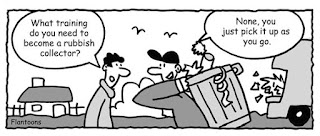|
FORM
|
FUNCTION
|
EXAMPLES
|
|
So+ adjective /adverb
|
We use so with nouns to mean very,
really, or extremely.
Lo usamos con sustantivos para
significar muy, muy o extremadamente.
|
The weather
is so hot today.
|
|
Such + adjective + noun
|
We use such with adjective and adverbs to mean very,
really, or extremely.
Usamos tales adjetivos y adverbios para significar muy,
muy o extremadamente.
|
He´s such an interesting character.
|
|
So/such… that…
|
We use a “that” clause aften “so
and such” to show results or consequences.
Usamos una cláusula
"that" después de "so y such" para mostrar resultados o
consecuencias.
|
The movie was so interesting that I watched it
twice.
|
|
Too + adjective/adverb
|
We use too with adjectives and adverbs to say that there
is more of something than we need or want.
También usamos adjetivos y adverbios para decir que hay
más de lo que necesitamos o queremos.
|
You´re speaking too fast. Can you speak more
slowly, please?
|
|
Not + adjective/adverb + enough
|
We use not…enough with adjectives
and adverbs to say that there is less of something than we need or want.
Usamos no ... suficiente con
adjetivos y adverbios para decir que hay menos de lo que necesitamos o
queremos.
|
It´s not
quiet enoung to study in here.
|
|
Too/(not) … enough … to …
|
We use an infinitive clause after too and (not) … enough
to show results or consequences.
Usamos una cláusula infinitiva demaciado y (no) ... suficiente
para mostrar resultados o consecuencias
|
There isn´t enough time to see the show.
The bed was too big to fit in the room.
|
Video de complemento












